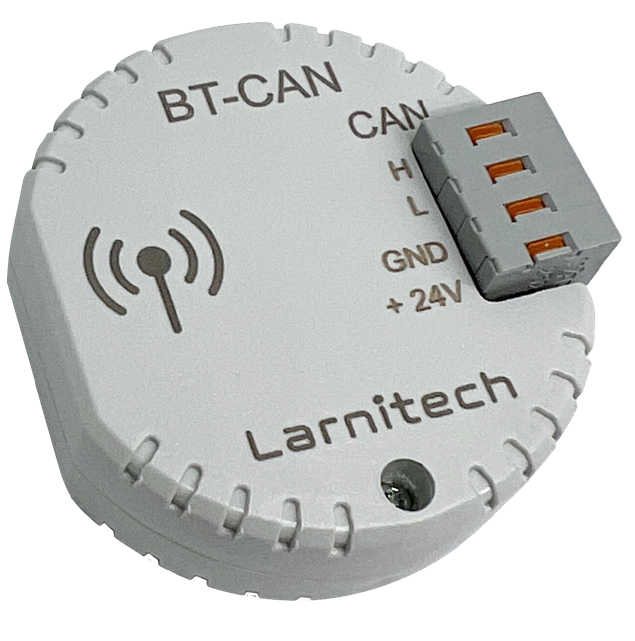Difference between revisions of "BT-CAN"
Jump to navigation
Jump to search
| Line 12: | Line 12: | ||
<!--T:3--> | <!--T:3--> | ||
| − | This module is used to connect | + | This module is used to connect to remote devices via Bluetooth. |
| − | |||
| − | |||
| − | |||
| − | |||
| − | |||
| − | |||
| − | |||
| − | |||
| − | |||
| − | |||
| − | |||
| − | |||
| − | |||
| − | |||
| − | |||
==Module parameters== <!--T:7--> | ==Module parameters== <!--T:7--> | ||
| Line 34: | Line 19: | ||
<!--T:8--> | <!--T:8--> | ||
{{ Mp | {{ Mp | ||
| − | |||
| − | |||
| − | |||
| − | |||
| power = 11.5 … 27.5 V DC from CAN | | power = 11.5 … 27.5 V DC from CAN | ||
| − | | maxcur24v = | + | | maxcur24v = ??? mA |
| − | |||
| bustype = CAN (4-wire) | | bustype = CAN (4-wire) | ||
| instalation = Free | | instalation = Free | ||
| Line 51: | Line 31: | ||
==Module installation and connection procedure== <!--T:9--> | ==Module installation and connection procedure== <!--T:9--> | ||
| − | |||
| − | |||
| − | |||
| − | |||
| − | |||
| − | |||
| − | |||
| − | |||
| − | |||
| − | |||
| − | |||
| − | |||
| − | |||
==HW settings== <!--T:13--> | ==HW settings== <!--T:13--> | ||
Revision as of 09:41, 25 July 2023
| BT-CAN | |||||||
|---|---|---|---|---|---|---|---|
 | |||||||
| |||||||
CAN to Bluetooth adapter
This module is used to connect to remote devices via Bluetooth.
Module parameters
| Parameter name | Value |
|---|---|
| Power supply | 11.5 … 27.5 V DC from CAN |
| Max current(24V) | ??? mA |
| Bus type | CAN (4-wire) |
| Equipment installation type | Free |
| Case material | ABS |
| Protection | IP40 |
| Temperature range | -10 … +50 °C |
| Size | 45x42x14 mm |
| Weight | 25 g |
Module installation and connection procedure
HW settings
| Name | Type, range | SUBID | Default | Description |
|---|---|---|---|---|
| in | char[16] | 98 | 'BBBBBB' | Each char is responsible for the type of a particular channel
And you can also connect one temperature sensor: 1hw="in='T-----'"
1Example: in='DEHSSG'
|
| offset | float(+/- 0…39) | SubID 30 temperature sensor | '0' | sensor values offset;
For example, offset is -3.8 : 1hw="offset='-3.8'"
|
Input HW configuration
1<item addr="477:13" cfgid="180" name="Switch" type="switch" uniq_id="78"/>
2<item addr="477:14" cfgid="180" name="Switch" type="switch" uniq_id="79"/>
3<item addr="477:16" cfgid="180" name="Door" type="door-sensor" uniq_id="80"/>
4<item addr="477:30" cfgid="180" hw="offset='15'" name="Temperature" type="temperature-sensor" uniq_id="83"/>
5<item addr="477:98" cfgid="180" hw="in='T+DD-H'" name="Temperature" system="yes" type="temperature-sensor" uniq_id="76"/>